Italian boxing style, known for its elegance and technical precision, is a blend of traditional boxing techniques with an emphasis on footwork and speed. This Mediterranean approach to pugilism has evolved through the years, carving out a niche that captivates enthusiasts who appreciate finesse over brute force in the ring. If you’ve ever wondered how Italian boxers finesse their way to victory, stay tuned as we dance through the intricacies of this distinctive fighting style.
What Is Italian Boxing Style?
Ever wondered what makes Italian boxing stand out in the ring? Italian boxing, not as globally recognized as some other styles, is a unique blend of finesse, speed, and strategic footwork that sets it apart from conventional boxing techniques. Let’s dip into the core principles and techniques that give Italian boxing its distinctive edge.
Core Principles and Techniques
Italian boxing, known for its artful approach, emphasizes precision and tactics over raw power. Here’s a quick rundown of the key ingredients that make this style so special:
- Precision over Power: Italian boxers focus on landing accurate and effective strikes rather than simply relying on force.
- Tactical Footwork: Nimble and strategic movement is key to both defense and setting up attacks.
- Defensive Maneuvers: A strong emphasis is placed on avoiding and deflecting punches, staying one step ahead of the opponent.
Distinctive Stance and Footwork
In Italian boxing, the stance and footwork are not just about defense; they’re a dance that sets up the offense. Here’s a glimpse at how Italian boxers stand and move:
- Balanced Stance: Fighters maintain a balanced and poised stance, ready to move or strike at a moment’s notice.
- Active Footwork: Instead of planting firmly, Italian boxers stay light on their feet, making it easier to maneuver around the ring.
Guard and Defense
The guard in Italian boxing is as much about setting up the next move as it is about protection:
- High and Tight Guard: Protecting the face is paramount, while the body guard is adaptable for both deflecting body blows and launching counterattacks.
- Fluid Movements: Instead of static blocking, the defense includes a variety of flowing movements to create angles and counter opportunities.
How It Differs from Conventional Boxing
Italian boxing may share the ring with conventional styles, but it dances to its own rhythm. Here’s how it stands out:
- Emphasis on Evasion: Instead of the more common “block and counter” approach, Italian boxers often employ evasion through slick footwork.
- Strategic Counterpunching: Patience is a virtue in Italian boxing, with fighters often waiting for the perfect moment to launch a calculated counterattack.
By understanding these key principles of Italian boxing style, you can appreciate the subtlety and complexity of this lesser-known, yet fascinating, approach to the sweet science. Whether you’re an aspiring pugilist or a fan of the sport, there’s something truly captivating about the Italian way of boxing.
Signature Moves & Strategies of Italian Boxing Style
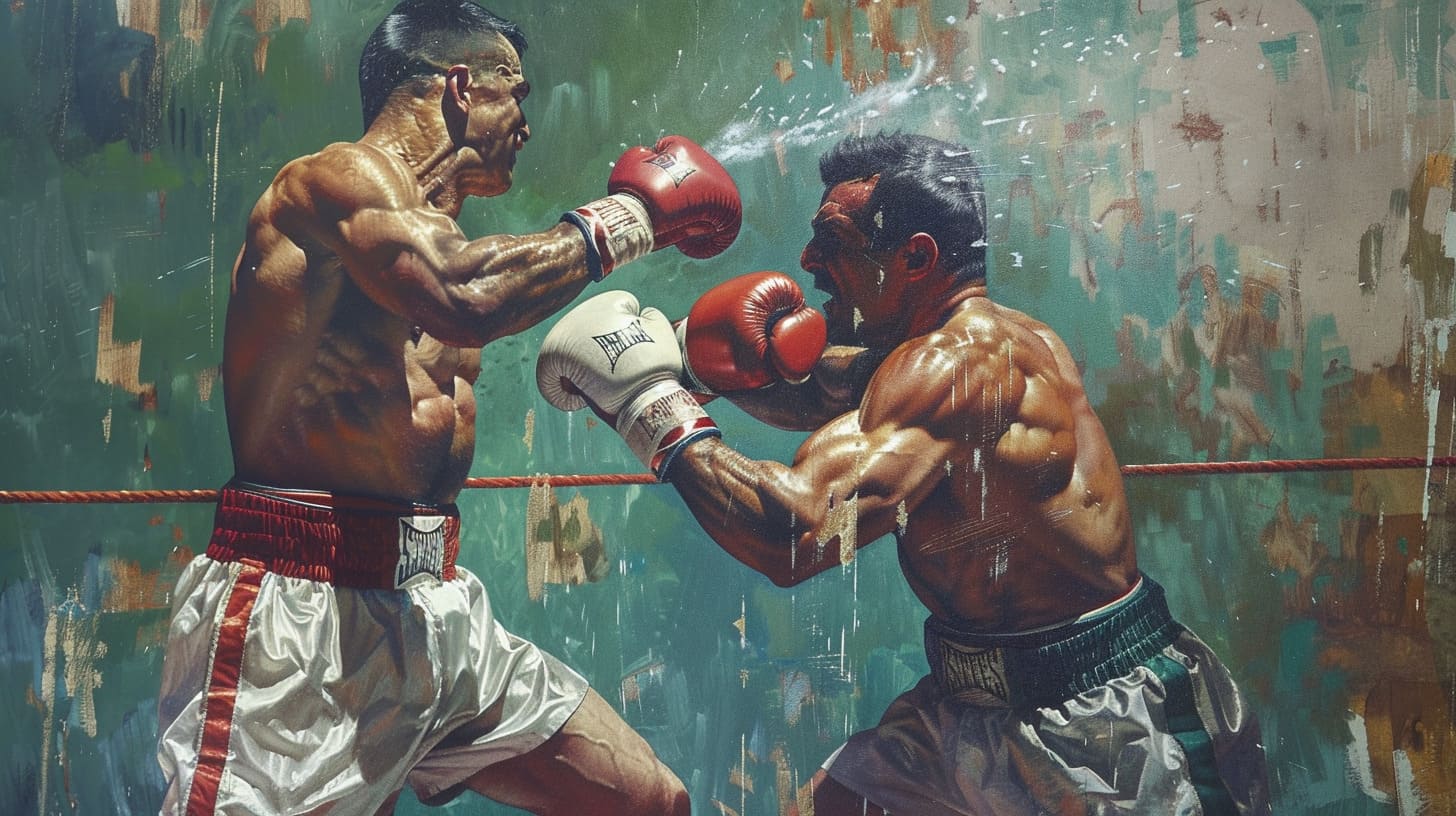
When talking about boxing, each country seems to have its unique flair, and Italy is no exception. The Italian boxing style is a captivating blend of finesse, tactical prowess, and smart aggression. Let’s dive into the core moves and strategies that give Italian boxers their edge in the ring.
1. The Flicker Jab
Italian boxers are renowned for their mastery of the flicker jab – a quick, snapping punch designed to confuse and disrupt an opponent’s rhythm.
- The Quick Snap: Unlike a traditional heavy jab, the flicker jab’s emphasis is on speed and frequency.
- Feint and Set Up: It acts as a feint to set up power shots or to keep the opponent at bay.
- Constant Harassment: The repeated use of this jab can frustrate opponents, leading them to make mistakes.
One of the most famous proponents of the flicker jab was the Italian boxing legend Nino Benvenuti. His use of the flicker jab was a fascinating display of speed and timing, often leaving his challengers puzzled and defensively compromised.
2. The Peek-a-Boo Defense
Italian boxers often adopt a distinctive defensive stance known as the “peek-a-boo,” which allows for quick counterattacks.
- Hands High: The guard is held high to protect the face, with the gloves positioned to allow visibility.
- Body Movement: Emphasis on both head and body movement to slip punches.
- Counterpunching: This stance is ideal for launching fast counterpunches, capitalizing on any openings.
Rocky Marciano, an American heavyweight champion of Italian descent, expertly utilized the peek-a-boo style. His technique provided a sturdy defense against incoming blows while enabling him to launch his own devastating attacks.
3. The Check Left Hook
In the arsenal of Italian boxing tactics, the check left hook plays a critical role in both defense and offense.
- Fluid Motion: Quick pivot off the front foot while throwing a hook.
- Creating Distance: It creates space between the boxer and their opponent.
- Counter Offensive: Often used as a counter-move to an opponent’s right hand.
Italian-American fighter Ray Mancini often displayed a masterful check left hook, using it to catch forwards-moving opponents off-guard. This move can quickly turn the tide of a bout, proving that in boxing, tactical intellect can reign supreme over brute force.
The elegance of Italian boxing lies in its seamless integration of these signature moves. Through the flicker jab, the peek-a-boo defense, and the check left hook, Italian boxers maintain a choreographed dance of attack and defense that is as effective as it is beautiful to watch. Each technique complements the others, resulting in a style that is both graceful and tactically sound.
Challenges and Limitations

When we’re chattin’ about the sweet science, the Italian boxing style, like any other, comes with its own set of quirks and quibbles. It’s all about that dance between strength and weakness, and Italian boxing is no exception. Let’s pull the curtain back and take a peek at where this Mediterranean method might face a few hurdles.
The Benefits of the Italian Boxing Style
Buckle up, folks—when it comes to the Italian style, it’s not just about throwin’ hands. This way of fighting’s got some smooth moves that can really make a bout go your way. Check out these shiny gems:
- Precision Hitting: One of the style’s hallmarks is its emphasis on accuracy. These pugilists can thread the needle with their punches, hitting the bullseye more often than not.
- Defense with Flair: They’ve got a thing for tight defenses but done with a little extra pizzazz. It’s about being slippery enough to make the opponent’s punches feel like they’re aiming at a ghost.
- Stamina and Endurance: Italian boxers typically train for the long haul. They’re all about that endurance, ready to go the distance like a Vespa on an open road.
- Psychological Edge: Employing a measured approach can throw off an opponent’s rhythm and mess with their head game, like a mental game of chess but with gloves.
Now, when do you wanna bring out the ol’ Italian charm in the ring?
- Against aggressors who prefer brawn over brains
- When you need to conserve energy and go all twelve rounds
- To fluster power punchers and wear them down tactically
- In matches where the emphasis is on skill and finesse over sheer force
The Drawbacks of the Italian Boxing Style
As with your favorite spaghetti sauce recipe, sometimes things don’t always pan out as tasty in the ring. So, when might the Italian boxing style need a bit more seasoning?
- Powerhouse Opponents: Those fighters packing TNT in their gloves can sometimes overshadow the technical finesse of an Italian boxer.
- Inside Fighters: Combatants who love to get cozy and fight up close and personal could smother the Italian style’s need for space and flair.
- Adaptable Adversaries: Boxers who can switch up their style on the fly might outmaneuver the structured approach of an Italian fighter.
- High-Pressure Hustlers: Opponents who press the action and keep the intensity cranked up could disrupt the composed tempo of this Mediterranean method.
In the face-off, if you’re rockin’ the Italian style, just know when to cook with gas and when to simmer down. And remember, even the best styles have their days of wine and roses, and days of wilting under a scorchin’ sun. It’s all part of the boxing banquet!
Defending Against Italian Boxing Style
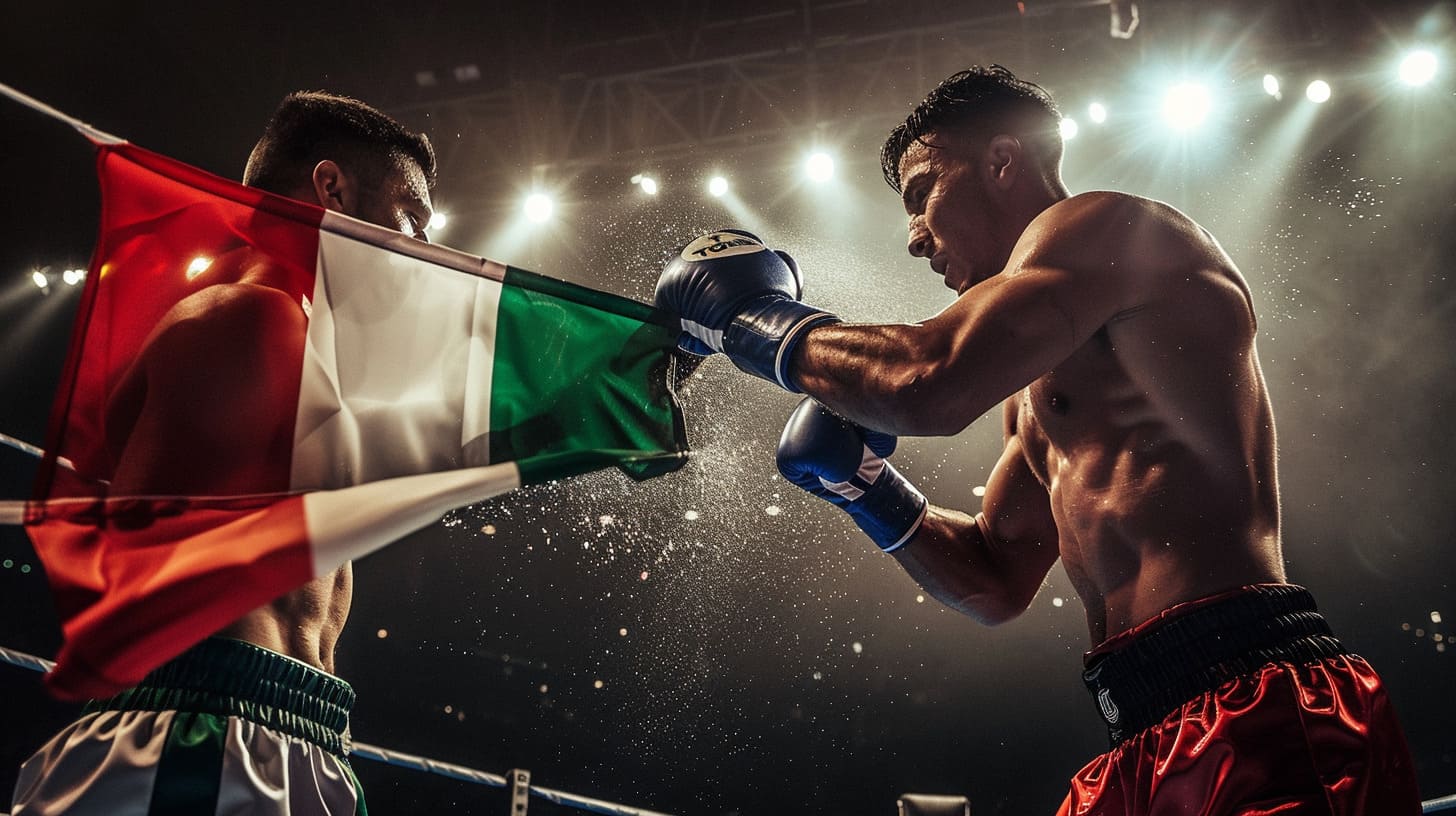
When you step into the ring with a boxer trained in the Italian style, you’re facing a blend of precision, pace, and old-school tactics. Let’s break down the unique challenges this presents and line up some defensive plays to keep you standing.
Understand the Framework
At its core, the Italian boxing style revolves around tactical movements and clever combinations. It’s a school of thought that values finesse and agility, often giving opponents a run for their money as they dance around the ring with calculated footwork and sudden, sharp strikes.
Key Points to Remember
- Italian boxers excel in maneuverability, making it tough to predict their next move.
- They favor combinations that can catch you off guard if you’re not quick on your feet.
- Expect the unexpected; be ready for switches in rhythm or sudden tactical retreats that can throw you off-balance.
Defensive Tips to Consider
Maintain Distance
Keep a safe distance to give yourself time to react. Use your jab to manage the space between you and your opponent.
- Quick Footwork: Shuffle back smoothly to avoid getting trapped or cornered.
- Jab Effectively: A well-timed jab can disrupt their rhythm and stop a combination before it starts.
Stay Alert
Enhance your reflexes and always be prepared to block or dodge their quick combinations.
- Active Guard: Keep your hands up and ready to protect against incoming blows.
- Sharp Reflexes: Develop your ability to dodge and weave effectively, using your whole body to evade attacks.
Counter Their Style
Employ strategies that counter the unique aspects of the Italian style. Use your strengths to exploit their tactics.
- Pressure Fighting: Apply constant pressure to overwhelm their strategic approach with volume.
- Tactical Clinching: Use clinching to disrupt their flow and to give yourself moments to reset.
Additional Practical Tips
Focus on Stamina
- Endurance Training: Boost your cardiovascular conditioning, ensuring you can keep up with their relentless pace.
Master the Clinch
- Clinch Work: Refine your clinching game. It can get you out of tight spots and break the Italian boxer’s momentum.
Adapt and Overcome
- Adaptive Strategies: Be ready to switch up your game plan on the fly, staying one step ahead of their scheming.
Notable Practitioners
Diving into the Italian boxing scene, we find a blend of tactical finesse and raw power. Let’s step into the ring with three pugilists who’ve carved their names into the annals of boxing history with their mastery of the Italian style.
1. Nino Benvenuti

Emerging from the picturesque landscapes of Italy, Nino Benvenuti is an embodiment of Italian boxing grace. With his career soaring in the 1960s and 1970s, Benvenuti’s skill set was as fine-tuned as a classical opera.
- Career Highlights:
- Olympic gold medalist at the 1960 Rome Games
- Professional record: 82 wins, 7 losses, 1 draw
- Two-time World Light Middleweight Champion
- Three-time World Middleweight Champion
Nino’s most iconic moment came when he captured the middleweight title in a thrilling fight against Emile Griffith in 1967, a classic match that displayed his technical prowess and strategic mind.
2. Rocky Marciano
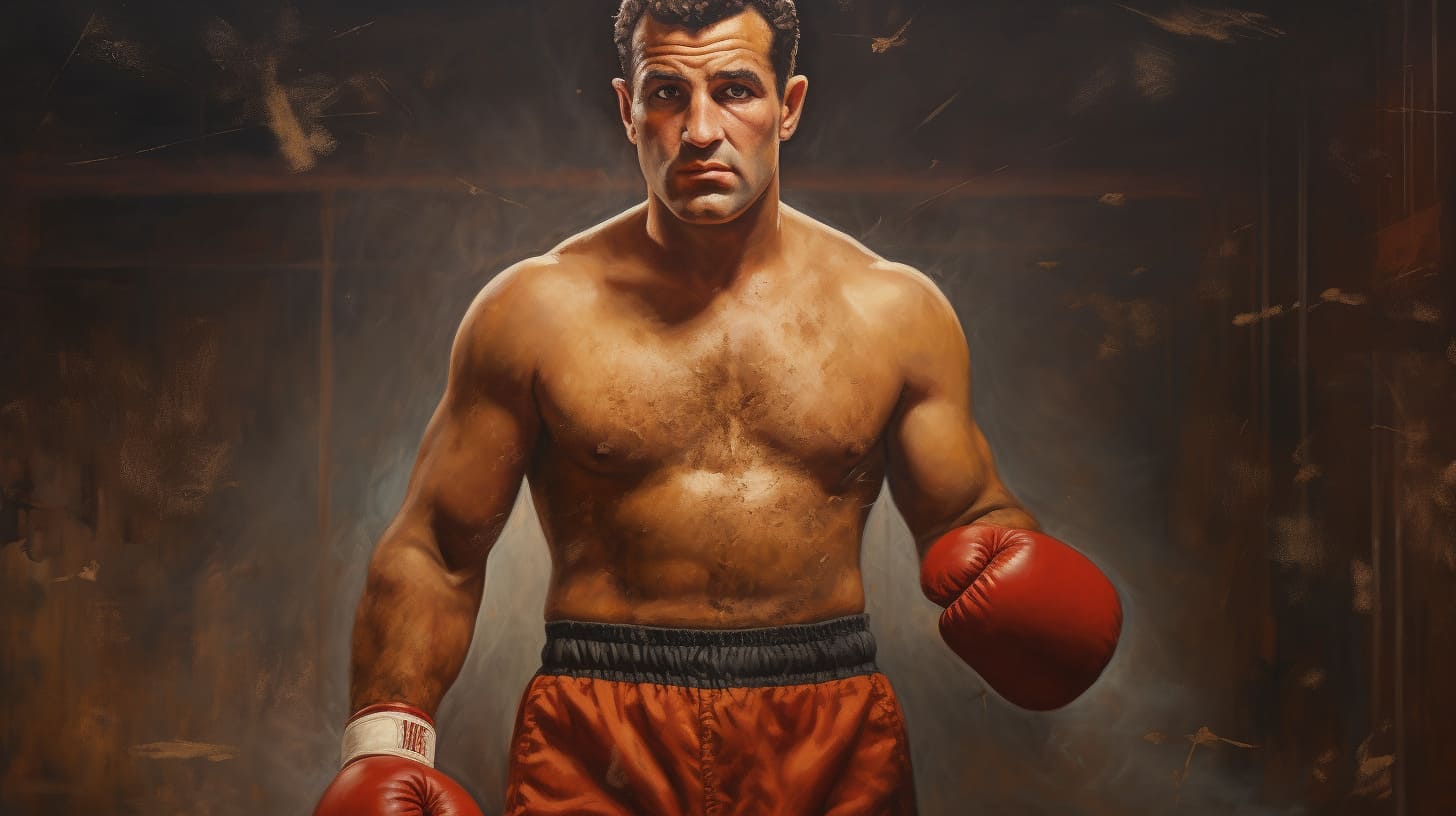
The pride of Italian-American boxing and a symbol of the undefeated, Rocky Marciano’s influence stretches far beyond the boundaries of Italy.
- Career Highlights:
- Only heavyweight champion to retire undefeated (49-0)
- Defended his title six times
- Notable for his relentless fighting style and stamina
Rocky’s relentless pursuit of victory was evident in his legendary bout with Jersey Joe Walcott in 1952, where his famous right hand, affectionately dubbed the “Suzie Q,” helped secure his path to become the heavyweight champion of the world.
3. Vito Antuofermo
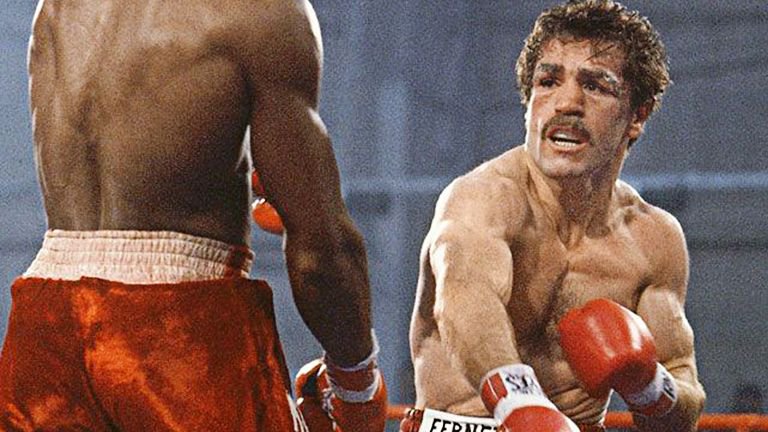
Vito Antuofermo may not be as widely recognized as some boxers, but within the ropes, his heart and determination spoke volumes.
- Career Highlights:
- Professional record: 50 wins, 7 losses, 2 draws
- Held the World Middleweight title from 1979 to 1980
- Known for his gritty, come-forward style and durability
In a classic display of his Italian boxing style, Antuofermo’s bloodied battle against Marvin Hagler in 1979 showcased his warrior spirit and exemplified the toughness associated with Italian boxers. Despite a controversial draw, this fight cemented Antuofermo’s reputation as a fighter to be reckoned with.
These practitioners not only defined their era but also left an indelible mark on the sport, shaping the way Italian boxing is perceived and practiced today. Through their achievements, they have woven a rich tapestry of heritage that continues to inspire fighters within and beyond Italy’s borders.
Training and Conditioning for Italian Boxing Style
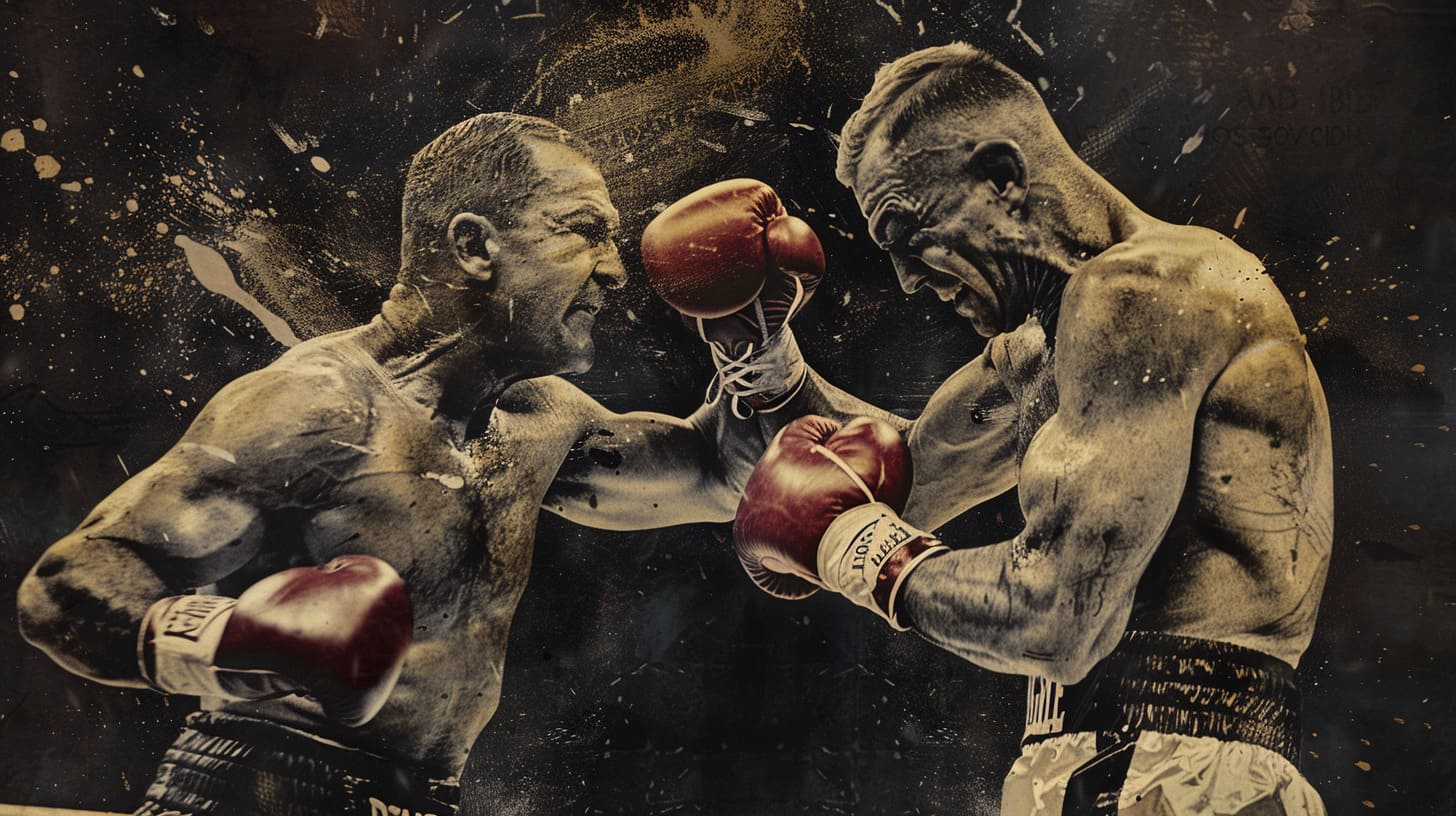
Getting into top-notch shape to master the Italian boxing style isn’t just about throwing punches; it’s a full-body commitment. Whether you’re dreaming of floating like a butterfly in the ring à la Italian greats or just want to add some European finesse to your workout routine, there are specific training strategies you can adopt. Let’s dive into some practical drills and conditioning tips tailored to enhance your agility, precision, and strength—cornerstones of the Italian boxing style.
Specific Drills to Hone Your Technique
Let’s set the scene: Italian boxing style is like a dance – precise, disciplined, and always on beat. To get that rhythm in your blood, there are certain drills you should incorporate into your training regimen.
- Shadow Boxing with an Emphasis on Footwork:
- Concentrate on fluid movements; glide across the floor as though you’re tracing the outline of Italy’s boot on the canvas.
- Use quick, light steps to enhance your ability to move in and out of range with ease.
- Speed Bag Workouts:
- Channel the pace of Italian sports cars with rapid punches to develop hand-eye coordination and quick hands.
- Keep a consistent rhythm to boost your timing, a vital element in the ring.
- Double-End Bag Drills:
- Imagine you’re striking the swift Mediterranean waves — be quick, be accurate.
- This bag will bob and weave just like your future opponents, preparing you to land punches on a moving target.
- Bodyweight Exercises for Core Strength:
- Integrating exercises such as planks, sit-ups, and leg raises will fortify your core, the central pillar of your boxing stance.
- A strong core improves balance, power delivery, and endurance.
| Core Exercises | Sets | Repetitions |
|---|---|---|
| Planks | 3 | 1 min hold |
| Sit-Ups | 4 | 15 reps |
| Leg Raises | 3 | 12 reps |
- Plyometric Exercises for Explosive Power:
- Incorporate jumps and bounds into your regimen to boost explosive leg strength, crucial for powerful punches and dynamic footwork.
- Short bursts of high-intensity moves will also improve your cardiovascular fitness.
Additional Tips for Training Italian Boxing Style
Upgrading your boxing prowess, Italian-style, is more than just repetitive drills. Keep these tips in your corner to come out on top:
- Precision Over Power: In the Italian boxing style, it’s about hitting the right spots, not just hitting hard. Focus on landing accurate punches rather than going all out with force behind each one.
- Stay on Your Toes: Mobility is king in the ring. Stay light on your feet and practice bouncing on your toes to maintain movement fluidity.
- Watch Italian Boxing Matches: Observe the masters at work. Noting their fighting strategies, defensive maneuvers, and how they control the pace can offer invaluable insights.
- Mind Over Matter: Mental strength is underrated. Incorporate meditation or visualization techniques to improve focus and reduce in-match stress.
- Nutrition and Rest: Lastly, don’t forget the age-old advice of getting adequate rest and maintaining a balanced diet. An Italian boxer’s vitality is as cherished as their technique.
Remember, adopting the Italian boxing style is like crafting a fine Italian dish—it requires time, patience, and the right blend of ingredients. Stick with these drills and tips, and before you know it, you’ll be serving up your skillset with the flair and precision of Italy’s finest boxers. Buona fortuna, and keep those gloves up!
Final Thoughts
As we wrap up this journey through the dynamic world of Italian boxing style, we’re left with a vivid image of a fighting discipline that’s as much an art form as it is a sport. From the tactical footwork akin to a grand ballerina’s poise, to the flicker jab as annoying and persistent as a buzzing mosquito on a hot summer night—Italian boxing is a delight to both the boxer and the connoisseur of pugilistic arts.
If you’re reading this, maybe you’re now considering lacing up your gloves and stepping into the rhythmic dance that is Italian boxing, or perhaps you’re just a fan, captivated by the elegance and precision of this Mediterranean marvel. Whatever it may be, the essence of Italian boxing—its clever balance of defense and offense, the patient wait for the opportune striking moment, and the signature moves that dazzle and befuddle—resonates with the idea that boxing, at its finest, is not about sheer force but the intelligent and strategic conservation of energy.
So, are you ready to float across the ring with the grace of a Venetian gondola and the sharp impact of a Roman gladiator’s strike? Sometimes, to “fight like an Italian” means to think two steps ahead of your opponent, always ready to turn the tide with finesse and a well-timed counterpunch. Lace up, keep your guard high, and remember that every bout is your canvas to create something memorable. Now, go out there and make every punch count like a maestro conducting a symphony!
And hey, why not share your thoughts or experiences with Italian boxing? Drop a comment, and let’s keep the conversation dancing just like an Italian boxer in the ring.
Additional Resources
Ready to dive deeper into the beauty and technique of Italian boxing style? Well, you’re in luck! There’s a treasure trove of information out there just waiting to sharpen your understanding and maybe even your jabs. Here’s a curated list of some top-shelf resources that can take you from fan to aficionado!
Books to Enhance Your Knowledge
For the bookworms out there who love to get their knowledge the old-fashioned way, here are some must-reads that pack a punch:
- “Boxing: A Cultural History” by Kasia Boddy
- This book may not be exclusively about Italian boxing, but it provides a broad historical context that can help you understand where Italian boxing fits in the grand scheme of things. Get it on Amazon
- “The Sweet Science” by A.J. Liebling
- Again, while not solely focused on Italian boxing, Liebling’s classic collection of essays offers insight into boxing history with the sharp wit and critical eye you’ll need to appreciate the subtleties of different styles. Find it here
Articles for Quick Learning
If you’re more into the quick read, these articles will hit the spot:
- “The Renaissance of Boxing” by The Ring
- An article exploring the resurgence of boxing in Italy, highlighting current fighters and gyms keeping the traditional style alive.
- “The Art of Boxing: Your Guide to the Sweet Science” on Bleacher Report
- This article offers a concise yet comprehensive overview of boxing techniques and history.
Instructional Videos
See the style in action with these engaging videos
- “Classic Italian Boxing Defense Mechanisms”
- This video goes through the quintessential defensive techniques used in Italian boxing. Check it out
Websites for Ongoing Learning
Stay updated and continue learning through these informative websites:
- “Italian Boxing Federation”
- A comprehensive website detailing the evolution and impact of boxing in Italy. Go to website
- European Boxing Confederation (EUBC)
- Their official site contains news, updates, and resources about boxing on the continent, including Italian boxing styles and events. Visit EUBC
By delving into these resources, you’ll be well on your way to understanding the Italian boxing style more intimately. Get ready to bob and weave through the wealth of information just like a skilled Italian pugilist in the ring!
